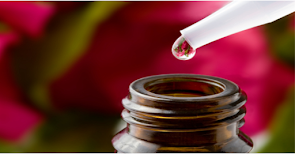 |
| Essential Oil Safety |
Essential oils are a wonderful complement to overall wellness, but are they safe for everyone? As a general rule they are, when they are used properly. But not every oil is safe to use in every situation or for every person. When using essential oils please keep in mind the following:
When working with an aromatherapist, pay attention to any information they may have for you and don’t be afraid to ask questions. Ask for the dilution ratio, ask for potential contraindications, ask if the blend can be used daily and for how long.
Essential oils are a great way to add to your overall wellness plan and they are generally safe but only if you use them responsibly.
*Source materials: Aromahead Institute; Tisserand and Young, Essential Oil Safety: A Guide for Health Care Professionals (second edition)
- Oils to avoid in epilepsy or those prone to seizure activity:Western Red Cedar, Wormwood, Genipi, Hyssop, Sage, Thuja, Pennyroyal, Buchu, Calamint, Tansy, Mugwort, Layana, Ho Leaf, Boldo, Wintergreen, Birch, Rosemary, Yarrow, Lavandin, Feverfew, and Spike Lavender.
- Be very cautious of essential oil use during pregnancy and while breastfeeding. Essential oils should be used during these times only at a 1% dilution and only under guidance of an aromatherapist or medical professional knowledgeable about essential oils. There are approximately 50 essential oils that are contraindicated during pregnancy and another 15 that should be restricted during pregnancy and lactation.
- The use of essential oils directly on the fur or skin of animals is not recommended. Small animals can have toxic reactions to essential oils being applied to their fur or skin.
- Phototoxic: Bergamot (0.4%), Lemon (2%), cold pressed Lime (0.7%), Grapefruit (4%), Bitter Orange (1.25%), Mandarin Leaf (0.17%), Cumin (0.4%), Angelica Root (0.8%), Laurel Leaf absolute (2%), Rue (0.15%) and Taget (0.01%). Sunlight or tanning bed rays must be avoided for at least 12–18 hours after application if any of these oils are used at levels higher than indicated. These oils applied to the skin at over the photo-toxic safety level will increase the chance of severe burns from ultraviolet light.
- Persons who have asthma and allergies should proceed cautiously with essential oils. Persons who have sensitivities to perfumes, or multiple chemical sensitivities should also exercise caution before proceeding with essential oils.
- For children between 5-12 years old, elders, pregnant women and those with serious health conditions, essential oils are to be diluted to a maximum of 1%, (a total of five to six drops of essential oil to 1 oz/30ml of carrier oil). Skin application and direct inhalation should be avoided for children younger than five years old. Hydrosols, carrier oils and butters are recommended instead. Birch or Wintergreen should not be used on or given to children in any amount due to risk of developing Reye’s syndrome.
When working with an aromatherapist, pay attention to any information they may have for you and don’t be afraid to ask questions. Ask for the dilution ratio, ask for potential contraindications, ask if the blend can be used daily and for how long.
Essential oils are a great way to add to your overall wellness plan and they are generally safe but only if you use them responsibly.
*Source materials: Aromahead Institute; Tisserand and Young, Essential Oil Safety: A Guide for Health Care Professionals (second edition)